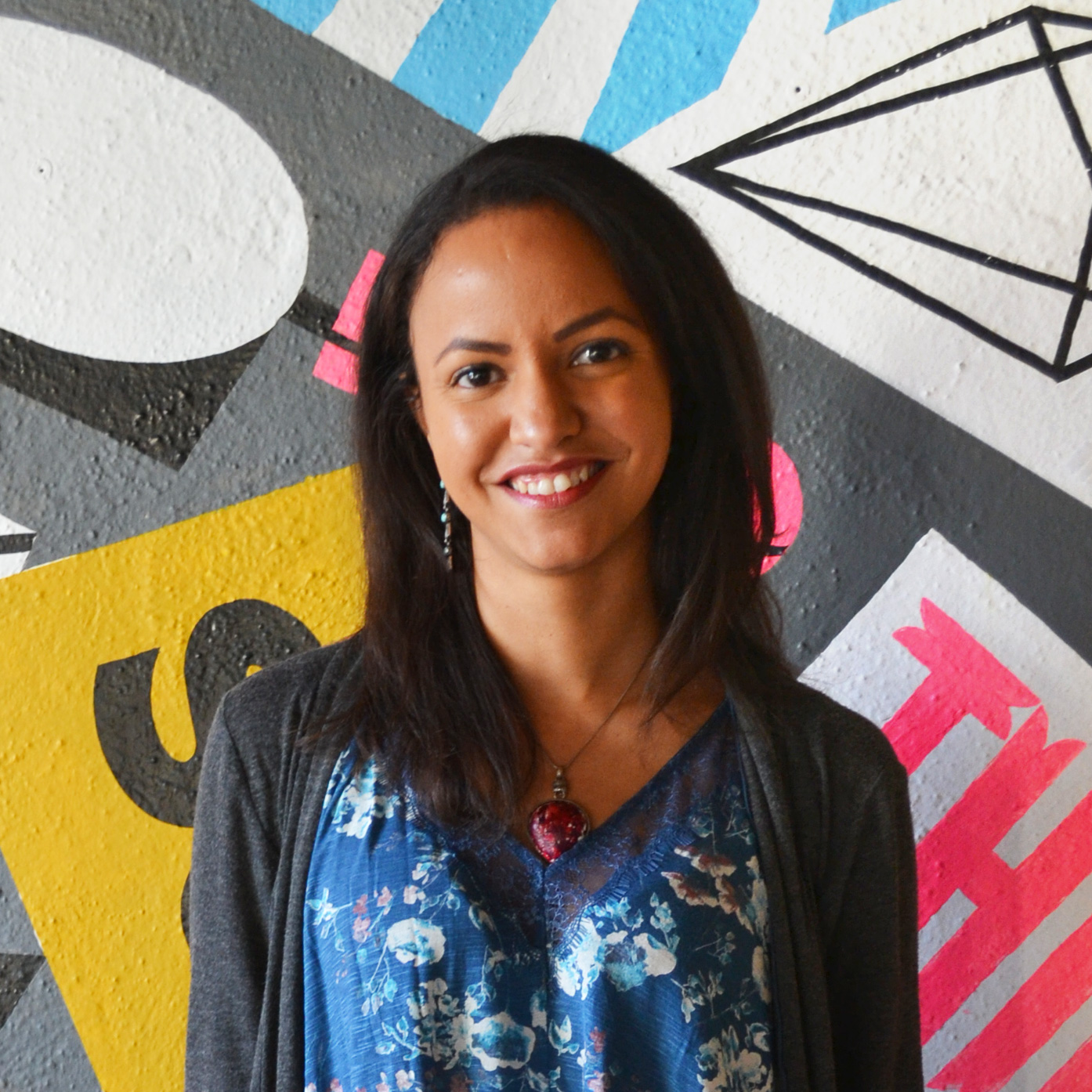



Some days, she could be found playing with props under the watchful eye of the staff and crew who served as an extended family, babysitting her and other children of the theater.
She would watch her artistic family transform through wigs and makeup, becoming historical figures or timeless characters.
Their voices would shift as they practiced lines; postures bending to match those of their characters.

Sarah herself stepped onstage at the age of 13, playing the daughter of protagonist Troy Maxson, who her father played in a production of August Wilson’s classic play, Fences.
When not onstage, she watched the rest of the production through gaps in the set, marveling over the moments that led the audience to tears.
Over the years, Sarah Bellamy has worked many roles for Penumbra, even concessions. And now, in its 41st season, she is taking over from her father, Penumbra founder Lou Bellamy, and taking on the starring role of artistic director.

Penumbra Theatre Company is a Saint Paul-based black theater company founded in 1976.
The theater has been responsible for supporting and establishing black playwrights such as Pulitzer Prize winner August Wilson, who was shaped and supported by the radical space Penumbra has created. It is Minnesota’s only professional African American theater and the largest black theater in the nation.
Penumbra is a linchpin of the Twin Cities theater community, as well as a pioneer, charting a path for other theaters to follow.
In recent years, more and more theaters in the region have begun featuring more diverse shows and performers—a development that would have been unlikely without Penumbra showing that there is indeed a diverse audience of theatergoers clamoring to see themselves represented on the stage.
But before this delayed and still nascent awakening, Penumbra was the only show in town for performers of color. And in some ways, it still is.
Over its 42 year history, Penumbra has employed more actors, choreographers, dancers, directors, and administrators of color than all other theaters in Minnesota combined.
Sarah takes that responsibility seriously, and thinks back to her childhood nights, watching from the wings as performers worked their magic on stage.

“When I realized that, I realized that Penumbra was doing something important, something that needed protecting.”

The walls of Penumbra’s dressing room have checkmarks for every standing ovation they’ve received, checkmarks that currently cover 12-foot walls in an ongoing testament to their artistry.
Penumbra’s work was born during the tail end of the Black Arts Movement, a socially-engaged arts movement of the late 1960s that encouraged black solidarity, self-determination, and positive expressions of black identity. The movement was rooted in theater—Amiri Baraka established the Black Arts Repertory Theater in 1965, and poets, playwrights, and musicians across the country helped it spread: including Gil-Scott Heron, Nikki Giovanni, Ntozake Shange, Ishmael Reed, and Sonia Sanchez.
While the movement was occasionally incendiary, it was a powerful force in American history that inspired many artists to express and affirm their cultural identities. Two guiding principles of the movement were that black artists should create work by themselves and for themselves, and that art should affect social change. These principles remain key to Penumbra, which has always provided a space for black artistry, leadership, and vision. Only now, the world is catching up.
“Penumbra has always been a radical space around equity,” Sarah says.
“It’s a space for black folks to be ourselves and recognize the beauty and depth and incredible history of our people. When Lou began the company, he had to be a bit clandestine about the social justice elements that were a part of the mission.”
Her father spoke about this in an interview earlier this year, saying “When I began this theater, we were considered ineligible for state arts funding because they said we were doing social service, not art.”
Today, Sarah can be open about Penumbra’s focus. “The center of our work is equity,” she says. “We are about eliminating racism, and we center people of color’s lives. What I’m doing is activating the mission that Lou envisioned, but didn’t have the resources or safety to do at the time.”
As co-artistic director at Penumbra from 2013 to this year, Sarah designed many of the programs that keep equity center stage for Penumbra. She hosts the Let’s Talk series of frank conversations on social justice, equity, and the arts. Penumbra holds regular workshops to explore issues of race and equity. For the 2016 elections, they launched a program to get voters from St. Paul’s Summit-University neighborhood out to the polls.
These programs go far beyond the expected duties of a theater company, but it’s just part of the script for Penumbra.

“I think you’ll see more and more of that kind of work from Penumbra under my leadership.”

Sarah’s leadership will be critical in helping Penumbra—and other arts organizations who serve and employ people of color—keep pace in an arts landscape that often tries to leave them behind.
A July 2017 report by the Helicon Collaborative found that just two percent of all cultural institutions receive nearly 60 percent of all financial contributions. And that egregious imbalance is getting worse, not better—a decade ago, the top two percent shared 55 percent of fundraising revenue. Foundation support does little to remedy this:
While people of color are 37 percent of the population, only four percent of foundation arts funding goes to organizations that primarily serve communities of color.

The cultural institutions that receive funding tend to be large and established but less diverse, focused primarily on Western European arts traditions and serving audiences that are largely white and upper income.
Smaller and newer organizations, however, are more likely to serve and employ people of color.
Organizations are feeling the strain of this imbalance. A 2015 Diversity in the Arts study by the DeVos Institute of Arts Management reported that black theater has “struggled with financial constraints, exacerbated by and stemming from competition from larger, mainstream theaters. […] These larger theater companies [snare] grant funding from corporate and government sources aimed at increasing diversity in the arts.”
This is a long-running problem. August Wilson wrote in his 1996 manifesto titled “The Ground on Which I Stand”:
“Black theater in America is alive, it is vibrant, it is vital…it just isn’t funded.”
Wilson goes on to say: “Black theater doesn’t share in the economics that would allow it to support its artists and supply them with meaningful avenues to develop their talent and broadcast and disseminate ideas crucial to its growth. The economics are reserved as privilege to the overwhelming abundance of institutions that preserve, promote, and perpetuate white culture.”
Sarah takes on this challenge the same way she approaches many others—with community. “We have to stand up for each other,” she says. Three years ago, Sarah started the five-member Twin Cities Theaters of Color Coalition with Mu Performing Arts, New Native Theater, Teatro del Pueblo, and Pangea—artistic organizations for and by communities of color that face similar challenges.
The Coalition helps member theaters pool their knowledge and chart a clearer course to success and sustainability through a changing arts landscape, giving their communities more power to create the art they want to see. Despite a budget of just over $2 million (relatively small, considering the Guthrie’s $26 million in expenditures), Penumbra is the largest member of the Coalition.

Sarah serves various roles that forward art and/or social justice in the region: she’s a visiting professor at United Theological Seminary of the Twin Cities, visiting instructor at Macalester College, vice chair of the board of directors for Theatre Communications Group (TCG) and co-chair of its Diversity, Inclusion, and Equity Committee—not to mention a 2015 Bush Fellow.
Sarah recognizes that these roles, in addition to her position at Penumbra, make her a leader among leaders. This makes her all the more committed to sharing power, with the Coalition, her fellow board and committee members, and with Penumbra staff.
Her goal as artistic director is to serve as a collaborative leader who thinks with people, works in teams, encourages the best ideas, and mentors those who might otherwise be overlooked or excluded.
“We operate under an ensemble aesthetic here at Penumbra,” she says. “We’ve got tremendous staff here, creating excellent programming.”
“I have a very strong voice, a strong vision, and I understand the mission well, but I tend to chart a course and then give the reins over to the people to build things in the way they’d like.”


“They trust me,” she says of her radical family. “It’s huge to be trusted.”
Trust is huge. The arts community has trusted Penumbra to elevate the voices and stories of communities of color for over 40 years. Now that trust is in the hands of a leader who watched those stories from backstage as a child.
And now Sarah Bellamy places her trust in her community, in hopes they will continue to support Penumbra’s essential role for another 40 years, and beyond.


Contributors



